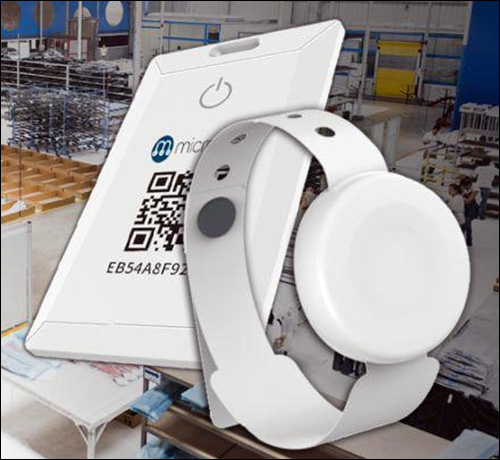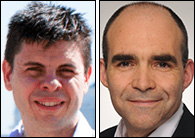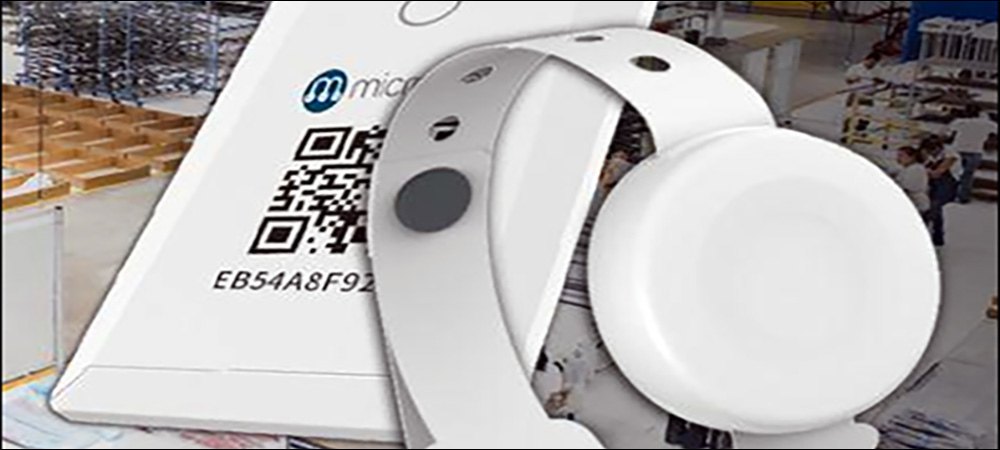Internet of Things (IoT) technology company Kerlink has released a new Bluetooth Low Energy (BLE) and LoRaWAN anchor and bracelet technology that can locate people for the purposes of social distancing and contact tracing for the industrial, manufacturing, healthcare and mining industries. The technology includes software and integration supplied by IoT data-management firm Microshare, which is selling the system worldwide. It has been deployed by several global pharmaceutical companies and by the Singapore government, and it is also in use at Kerlink’s own office in France.
The solution is designed for companies at which workers or residents do not typically carry smartphones. While the technology captures data about the location and proximity of people at a facility, it keeps that information private unless an individual tests positive for COVID-19, at which time it can provide contact information for the prior 14 days, along with location data if beacons have been deployed.

The solution, known as Universal Contract Tracing, consists of BLE beaconing bracelets worn by workers, beacons that can be deployed around an office, and the Wanesy Wave anchor to capture the BLE data. The system forwards the collected data to a Wanesy iFemtoCell-evolution gateway via a LoRaWAN connection, which in turn forwards the data to a server via cellular connectivity.
With the solution in place, authorized managers at a company can identify anyone with whom a worker has been in contact for a span of 14 days, in the event that the employee indicates he or she has tested positive for COVID-19. If a positive case is confirmed, the company can identify where the bracelet has been, based on fixed beacons at specific locations, so that extra cleaning can be provided.
With the technology, Microshare and Kerlink explain, companies can provide a safer work environment for employees by ensuring that anyone at risk of having the coronavirus will be quickly identified before that person can infect others. Potential users of the technology include factories, warehouses, construction sites, mining installations, oil and gas facilities, prisons, schools, hospitals and elder-care facilities, says Charles Paumelle, Microshare’s chief product officer. The company is now in discussions with customers in North America, Europe and Asia.
Kerlink released the Wanesy Wave system in April as an indoor anchor that employed both Wi-Fi and LoRaWAN tracking technologies. It was designed at the end of last year, however, for a different use case than contact tracing, says Stephane Dejean, Kerlink’s CMO—namely, to track the movements of consumers through a retail space. Companies can deploy the anchor in stores, for instance, and they can detect and locate smartphones and other Wi-Fi devices as consumers move around a space. Once a Wi-Fi transmission is detected, the anchor transmits the data to an industrial-grade LoRaWAN gateway via a LoRaWAN link.
The solution was initially designed for use in enabling retail shops, commercial malls or museums to count visitors, trace their movements and retrieve their customer journeys in stores and other buildings. That information can help businesses understand how long individuals spend at different areas, such as in front of a store’s product displays or a museum’s paintings. The system can also be used at factories, warehouses and hospitals to allow the real-time location of devices, Dejean says, by tracking asset use over a period of time, or by providing instant inventory data regarding tools or equipment within a given area.
In addition, Dejean says, technology could link data to direct marketing and prompt specific offers to be pushed to smartphones for retailers. The company has provided the solution to such companies as Metro, Shell and Volkswagen for use in tracking traffic at their stores. “This was the starting point for the product,” he states, before COVID-19 spread worldwide. With the pandemic’s outbreak, Dejean recalls, “We said ‘We have this product, and we understood there would be challenges for tracing workers at offices.'” Therefore, the company decided to offer a solution dedicated to safe workspaces.
Kerlink began working with Microshare to create a solution. The two companies had already provided technology for a smart cleaning solution in public restrooms, to provide customer feedback solutions related to the cleanliness of surfaces and assets. For the Universal Contact Tracing system, the two companies designed a solution consisting of off-the-shelf bracelet tags with Bluetooth connectivity rather than Wi-Fi, then updated the Wanesy Wave anchor to enable this type of transmission.
Kerlink became one of the first customers by providing the technology to workers at its own offices. Internally, the firm provides each of its customers with a wearable beacon device for a wristband, lanyard or armband, which monitors other such devices within range. Each wearable has a unique ID number that it beacons using a built-in battery. It also receives beacon transmissions from other wearable beacon devices, Paumelle says, or from a BLE-enabled location marker that could be placed in areas where people commonly congregate, such as kitchens or meeting rooms.

Charles Paumelle (left) and Stephane Dejean
When individuals wearing the devices come within range of the Wave anchor, it forwards that information to the server via a single LoRaWAN gateway. It also erases the memory on the wearable device. No one accesses the cloud-based data unless an individual tests positive for COVID-19, in which case management would receive authorization for contact tracing.
The anchors, which measure approximately 2 inches square, are powered by being plugged directly into an outlet, though future versions could be battery-powered. The system is not designed to alert workers in any way, but rather to simply collect data. The information is then stored for 14 days—the disease’s average maximum incubation time. “We will be able to inform these people to be tested or stay at home if they have symptoms,” Dejean states. Kerlink designed the software that is stored on the bracelets, and it also designed and manufactures the Wave anchor and the gateway.
Microshare integrates these components and adds software and a customer-facing application on a cloud-based server. Headquartered in Philadelphia, with offices in Boston, London and in India, Microshare was launched in 2013 with an IoT software platform for smart facilities. Its solution are being used for predictive cleaning, occupancy and asset zoning, and contact tracing.
The company began modifying its solutions for the contract tracing application based on requests from a company client, Paumelle says. Since then, it has been speaking with large companies around the world that typically provide essential products and services, so they can’t afford to shut down but also can’t employ smartphone-based solutions since individuals may not have phones. That includes workers who leave their phones in lockers, as well as residents in eldercare environments.
“Since we already offered our smart facilities solution for assets,” Paumelle says, “we’ve been able to develop this solution very quickly.” The company continues to offer its predictive cleaning solution with a new version of its LoRaWAN based touch-button device from Skiply, which includes a QR code so that users can provide input about a room’s cleaning status without touching the buttons.
“We’ve had very good traction because the solution makes sense to help companies restart,” Dejean reports. The system ensures that businesses can quickly trace any potential contacts and thus clean necessary areas, he says, enabling them to prevent temporary office closures. Following conversations with companies around the world, Dejean adds, “We have interest from private businesses, especially manufacturing and industrial sites.” The solution is being sold on a subscription basis, per bracelet and per user.


